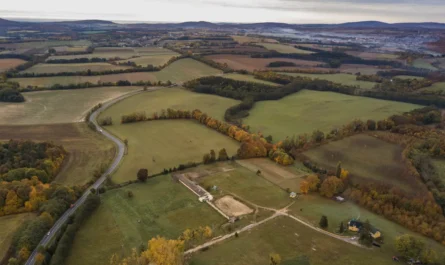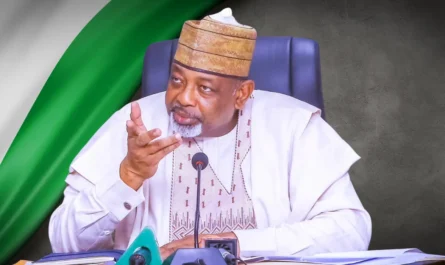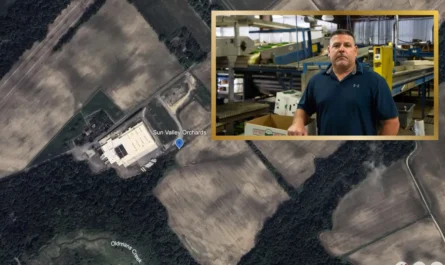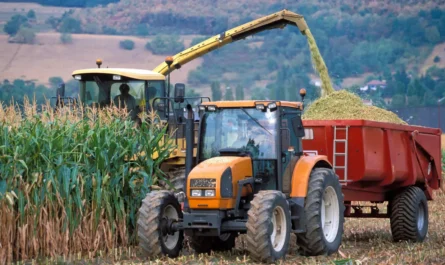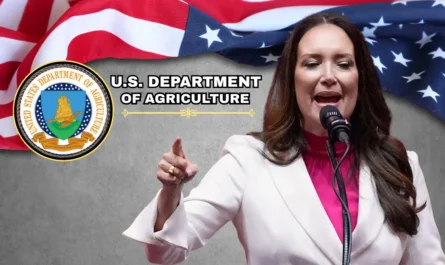Gov. Mike Dunleavy’s latest attempt to reshape Alaska’s executive branch by creating a stand-alone Department of Agriculture has once again sparked resistance from legislative leaders, who argue the move exceeds his constitutional authority and undermines the role of the Legislature in shaping state policy.
In a letter sent Monday, House Speaker Bryce Edgmon, I-Dillingham, and Senate President Gary Stevens, R-Kodiak, urged the governor to withdraw his executive order establishing the new agency.
The two leaders contend that Alaska’s Constitution does not allow such an order to be issued during the current special session, which Dunleavy himself convened earlier this month.
Their letter also pressed for clarity: if the governor continues to assert that his action is lawful, they want Attorney General Treg Taylor to publish a legal opinion explicitly backing that interpretation.
So far, Dunleavy shows no sign of retreating. His spokesperson, Jeff Turner, said Thursday that the governor’s stance remains the same as it was in an Aug. 2 letter to lawmakers: unless the Legislature votes in joint session to reject his order before the end of August, the administration will consider it adopted.
A Constitutional Standoff
At the heart of the dispute is a single sentence in Alaska’s Constitution. Article III, Section 23, says the Legislature has 60 days during a regular session, or the full length of a shorter session, to disapprove executive orders that reorganize the executive branch.
Edgmon and Stevens argue that this language does not give governors a blank check to reintroduce orders that lawmakers have already rejected, nor does it allow such measures to be imposed during a 30-day special session.
They note that lawmakers rejected a nearly identical proposal in March during the regular session, calling Dunleavy’s attempt to revive it through a special session “unlawful” and contrary to the intent of the Constitution.
“Nothing in the Alaska Constitution suggests that a governor may issue successive executive orders on the same issue to the same legislature once that legislature has exercised its disapproval power,” the leaders wrote.
The special session itself complicates the matter. Dunleavy set its duration at 30 days, well short of the 60-day review window the Constitution lays out for such executive orders. Edgmon and Stevens say that the discrepancy alone makes the order invalid.
But the governor disputes that interpretation. In his Aug. 2 letter, Dunleavy argued the Constitution does not restrict the timing of executive orders. By his reasoning, the “full session” referenced in Article III applies to the special session that began earlier this month, even if it lasts less than 60 days.
He has suggested he is ready to defend that position in court, dismissing the Legislature’s objections as a “dubious tactic” that risks fueling unnecessary legal battles between the executive and legislative branches.
What the Order Would Do
If left in place, Dunleavy’s order would establish the Department of Agriculture on Jan. 1, 2026. The new department would absorb the state’s current Division of Agriculture, which is housed under the Department of Natural Resources (DNR).
Currently, the DNR oversees a wide range of industries, including oil, gas, mining, and timber. Dunleavy and his supporters argue that carving agriculture into its own department would give food security and farm development the focused leadership they deserve, rather than leaving them in a division overshadowed by Alaska’s powerful resource extraction industries.
Supporters point to potential benefits, including bolstering food production in a state where more than 90 percent of food is imported from outside Alaska.
They argue a stand-alone department could better support Alaska’s 1,200 farmers, who produced $91 million in agricultural goods in 2022, while also promoting food independence in a state vulnerable to supply chain disruptions.
Lawmakers Favor a Different Path
While many legislators do not oppose the concept of a dedicated agriculture department, they maintain that the governor’s approach is flawed.
Both the House and Senate majorities have signaled that the right way to establish such an agency is through legislation, a process that allows lawmakers to hold hearings, weigh costs, and amend the proposal.
By contrast, executive orders cannot be amended; lawmakers can only vote them up or down. For legislators, that restriction is a fundamental problem because it cuts them out of shaping the details of a major government reorganization.
The cost of creating a new department also remains a sticking point. When lawmakers rejected the plan in March, they cited concerns about Alaska’s structural budget deficit.
Analysts warned that establishing a stand-alone department could cost millions annually, an expense the state can ill afford as it struggles with long-term fiscal challenges.
Administration officials counter that argument by saying the department could be created without new spending by reallocating existing state positions and resources. Lawmakers have remained skeptical, pressing for clearer cost estimates and greater transparency.
Broader Tensions Between Branches
This clash reflects a broader tension between Dunleavy and the Legislature over executive authority. The governor has repeatedly used executive orders to advance policy goals, while legislative leaders insist that sweeping changes to state government should go through the ordinary legislative process.
The agriculture department fight is especially charged because it revives an order that lawmakers had already rejected. By attempting to reissue the measure during a special session, Dunleavy has reignited concerns about executive overreach and raised fresh constitutional questions that could ultimately land before the courts.
For lawmakers, the issue is not only about agriculture but also about precedent. Allowing the governor to repeatedly reintroduce rejected executive orders could, in their view, erode the Legislature’s ability to check the executive branch.
What Happens Next
The Legislature has until the end of August to formally respond to the governor’s order. If lawmakers convene in joint session and vote to reject it again, the order will fail. If they do not act, the Dunleavy administration says it will take effect automatically.
That outcome would almost certainly trigger a court challenge, given legislative leaders’ insistence that the order is unconstitutional. Such a dispute could test the boundaries of executive power in Alaska and clarify the role of special sessions in the state’s political framework.
Meanwhile, the idea of a Department of Agriculture is likely to resurface in January, when the Legislature reconvenes for its regular session. Several lawmakers have expressed willingness to debate the proposal in bill form, where costs, structure, and responsibilities could be more thoroughly vetted.
Agriculture and Alaska’s Future
Beneath the constitutional clash lies a pressing policy debate: how Alaska should manage and grow its agricultural sector. With climate change affecting shipping routes and supply chains, and with Alaskans facing rising food prices, the push for greater food security has taken on new urgency.
Advocates say a dedicated department could centralize programs to support farmers, expand research, and develop strategies to reduce dependence on imported food. Critics, however, argue that the timing is wrong given the state’s precarious finances and that existing structures could be retooled without creating a new bureaucracy.
For now, the governor and legislative leaders remain locked in a high-stakes standoff. The outcome could shape not only the future of Alaska’s agricultural policy but also the balance of power between the executive and legislative branches for years to come.








